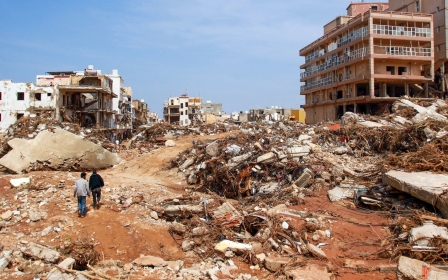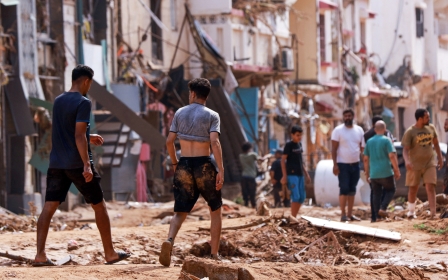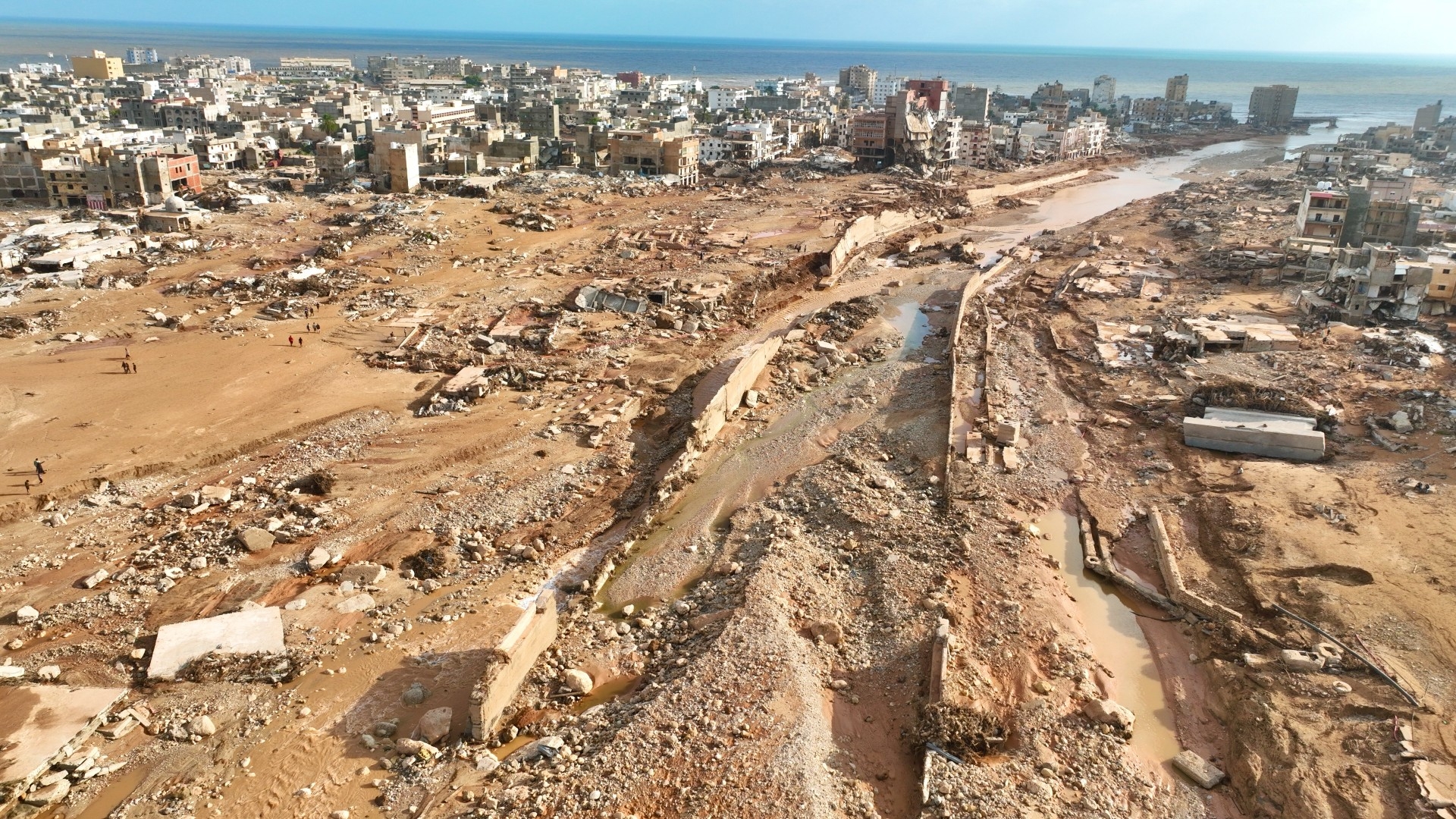
Libya floods: Satellite images show Derna before and after the disaster
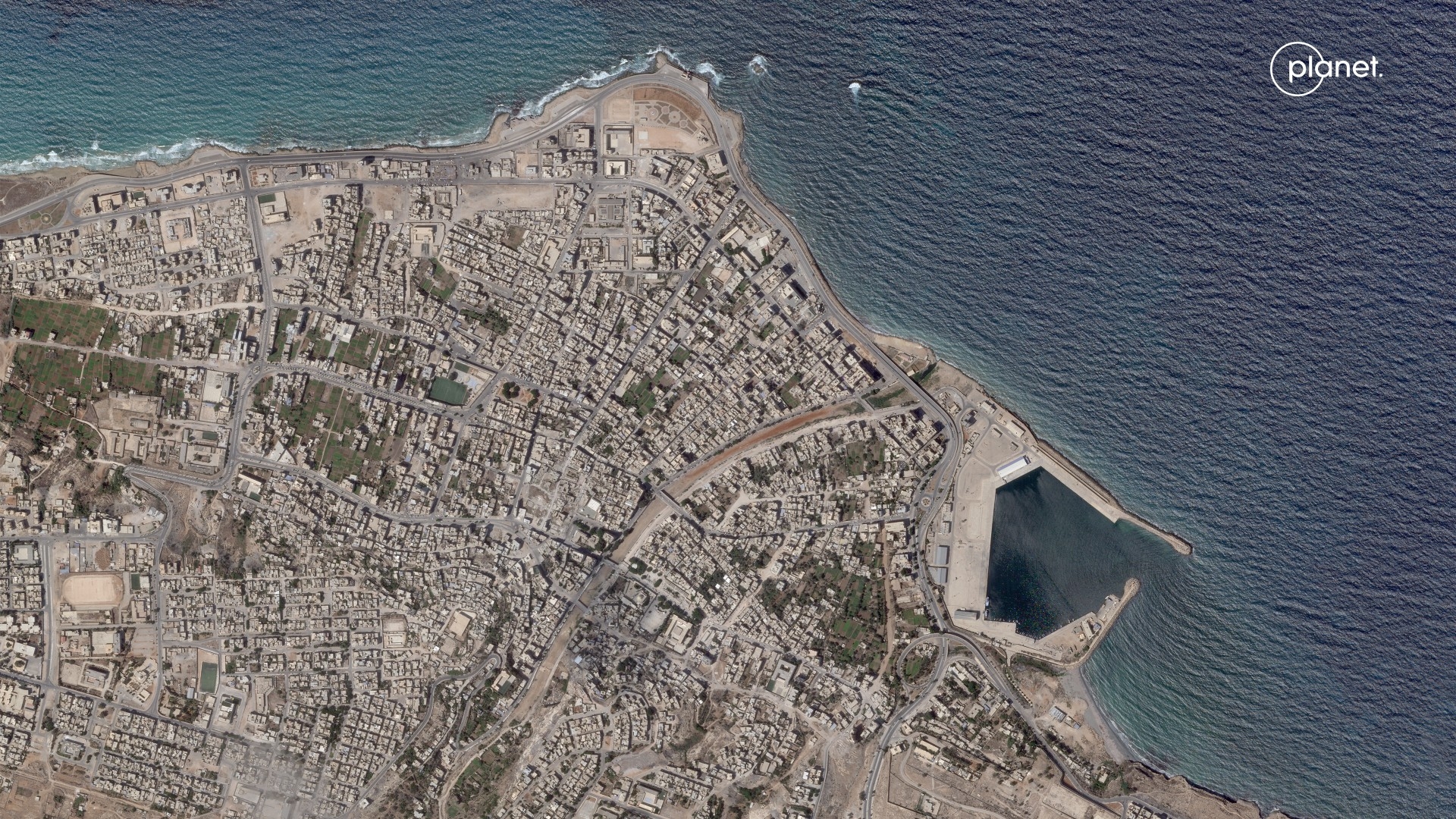
This satellite photo from Planet Labs PBC shows Libya's Derna on 2 September before Storm Daniel hit and disaster struck on 10 September.
As the storm pounded the coast, Derna residents said they heard loud explosions and realised that dams outside the city had collapsed.
Flash floods were unleashed down Wadi Derna, a river running from eastern Libya's Green Mountains through the city and into the sea. (Planet Labs PBC via AP)

This satellite photo from Planet Labs PBC shows flooding in Derna on 12 September.
Vast swaths of the city now appear to be submerged in brown mud while many buildings seem to have been simply swept into the sea. The river banks along Wadi Derna have been blown away by the torrents.
At least a quarter of the Mediterranean port city is believed to have been destroyed, with severe damage and flooding in many other parts. So far, the death toll is believed to be more than 5,000, with many more missing. (Planet Labs PBC via AP)
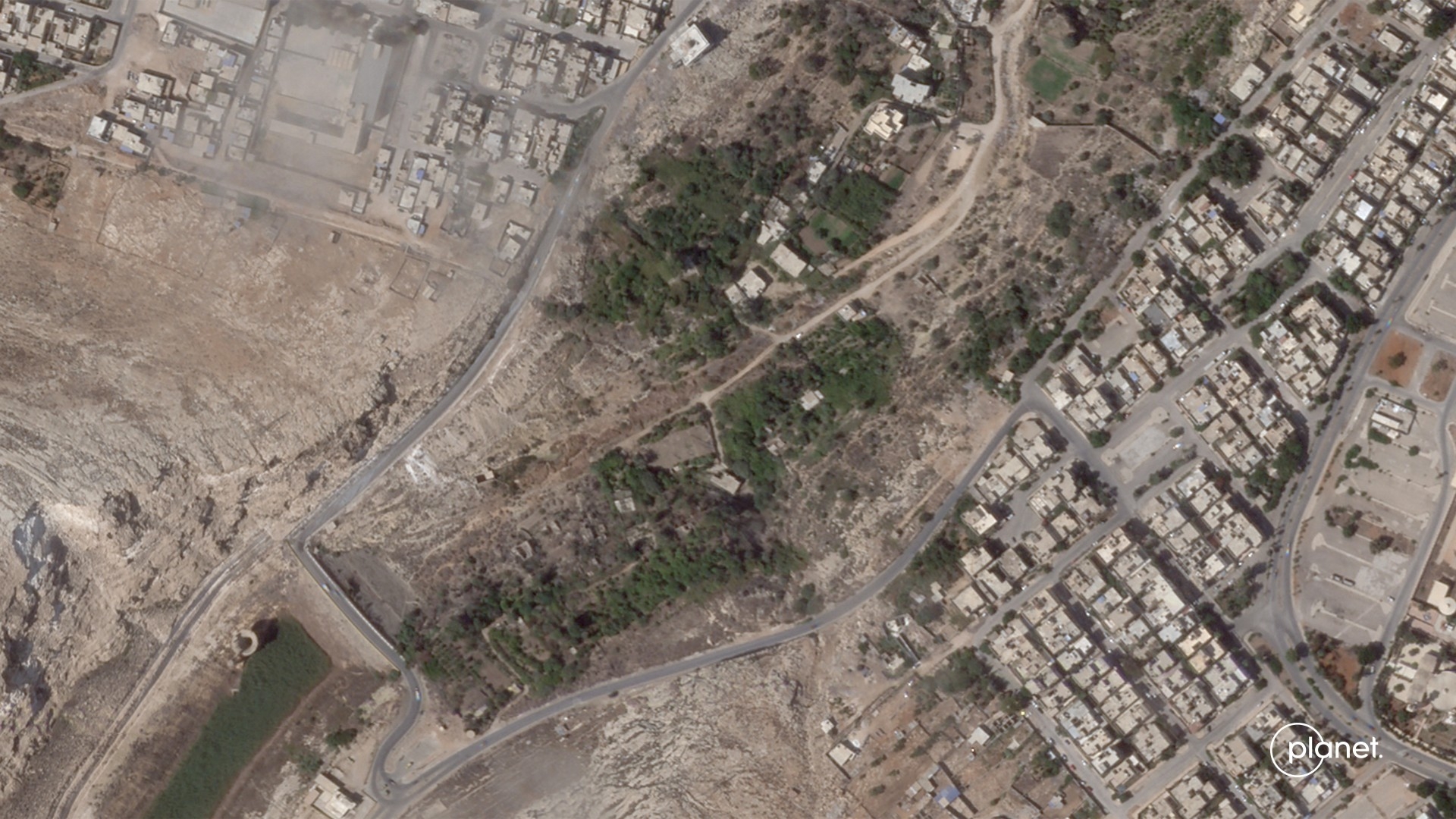
In this Planet Labs PBC satellite photo, a dam is seen upriver from Derna on 2 September before its collapse.
The dams near Derna were built in the 1980s. Since the flooding, people have highlighted research published last year that warned they were vulnerable to collapse.
"The results demonstrate that the area of study has a high potential for flood risk. Therefore, dams of Wadi Derna basin need periodic maintenance," the study said. (Planet Labs PBC via AP)
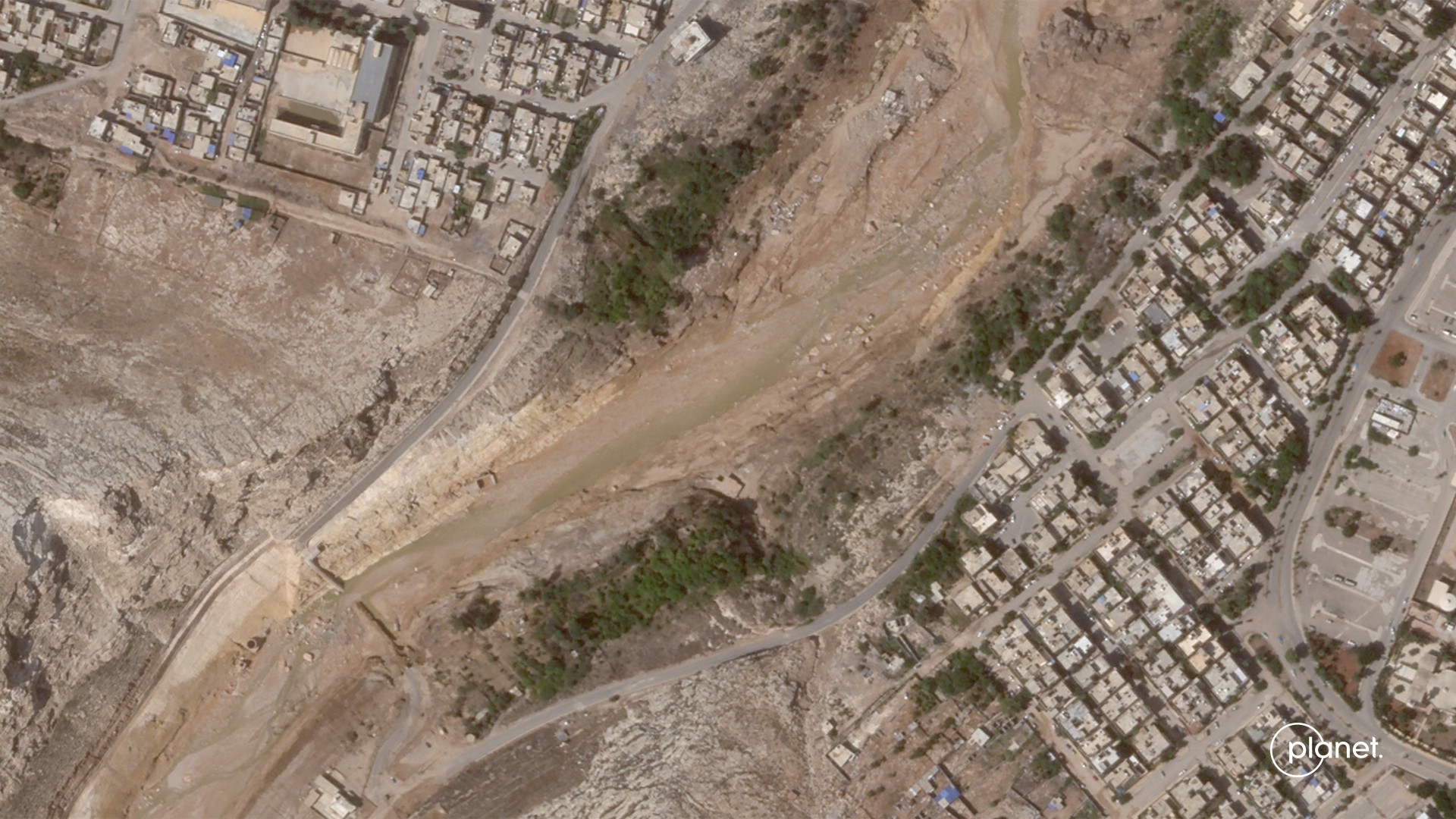
Ten days later, on 12 September, the same dam is shown in this satellite photo from Planet Labs PBC to have totally collapsed.
Wadi Derna is a seasonal river that is usually protected by its dams. It runs from the highlands known as the Green Mountains to the Mediterranean Sea through the city of Derna, which has a population of around 100,000 people.
Over Libya's tumultuous past decade, Derna has been both neglected and attacked by various shifting authorities. It was one of the first cities to rise up against Muammar Gaddafi in 2011. Between 2015 and 2018, eastern commander Khalifa Haftar laid siege upon it.
And between May 2018 and January 2019, Haftar subjected it to a brutal assault, seeking to expunge it of an armed group and assert his authority over eastern Libya. (Planet Labs PBC via AP)
Middle East Eye delivers independent and unrivalled coverage and analysis of the Middle East, North Africa and beyond. To learn more about republishing this content and the associated fees, please fill out this form. More about MEE can be found here.


